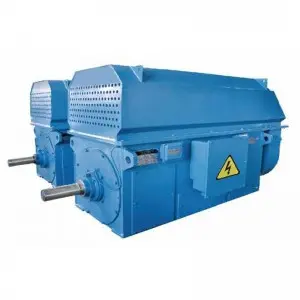The operating characteristics of the three-phase asynchronous motor The operating characteristics of the asynchronous motor refer to the motor’s speed n, stator current I1, power factor cosφ1, electromagnetic torque T, efficiency eta, etc. and the output power P2 when operating at rated voltage and rated frequency. The relationship, that is, when U1=UN and f=fN, n, I1, cosφ1, T, η=f (P2). Since the asynchronous motor is an AC motor, the power factor needs to be considered for the power grid. At the same time, due to single-sided excitation, the excitation current and the load current coexist in the stator winding, so the stator current must be paid attention to. The rotor current generally cannot be measured directly, so these characteristics must be related to the output power. Like DC motors, once you are familiar with the working characteristics of an asynchronous motor, you can make it successfully complete the mission assigned by the drag system.
1. Speed characteristics
Under rated voltage and rated frequency of an asynchronous motor, the curve n=f (P2) in which the speed changes when the output power changes is called the speed characteristic.
When the motor is no-load, the output power P2≈0, in this case I2=0, the above relationship shows that the slip s is almost proportional to I2, so s≈0, the speed is close to the synchronous speed, that is, n=n1. When the load increases, the speed will decrease slightly, and the rotor electric E2s increases, so the rotor current I2 increases to produce a larger electromagnetic torque and load torque balance. Therefore, as the output power P2 increases, the slip s also increases, and the speed decreases slightly. In order to ensure that the motor has higher efficiency, in general asynchronous motors, the rotor copper loss is very small. The corresponding speed characteristic of a slip rate of 1.5% to 5% (small numbers correspond to large-capacity motors) is a slightly downward-sloping curve, which is very similar to the speed characteristic of a shunt DC motor.
2. Stator current characteristics
When the output power of an asynchronous motor changes at rated voltage and frequency, the change curve of the stator current I1=f (P2) is called the stator current characteristic. When there is no load, the rotor current and the stator current are almost all excitation current. As the load increases, the rotor speed decreases, the rotor current increases, and the stator current and magnetic potential also increase, offsetting the magnetic potential generated by the rotor current to maintain the balance of the magnetic potential. The stator current increases almost in proportion to P2.
Post time: Jan-23-2024

